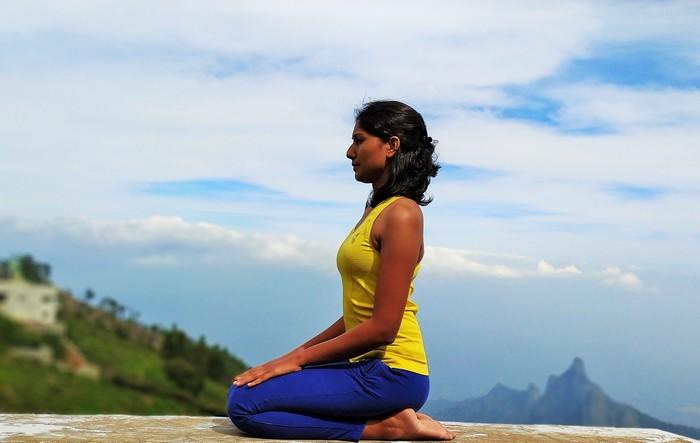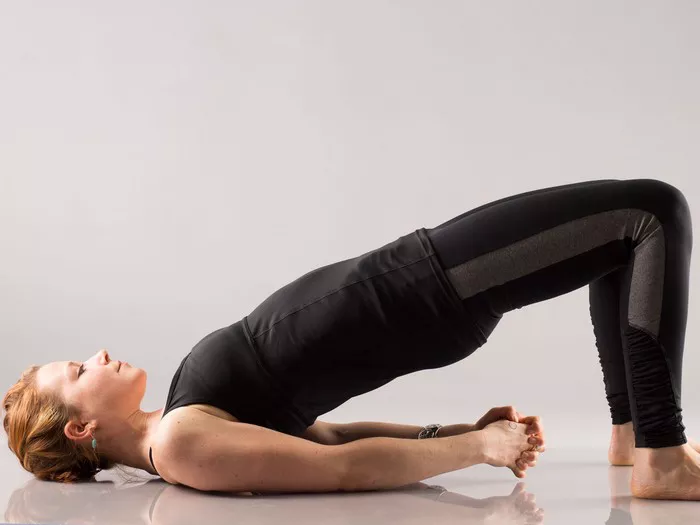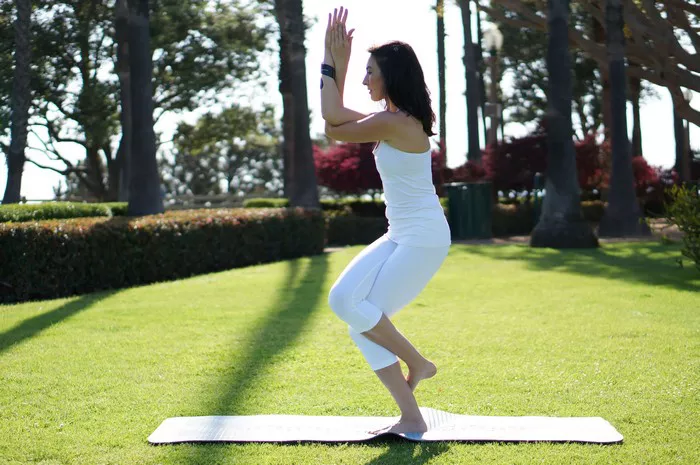Yoga, an ancient practice originating from India, encompasses a wide array of poses designed to harmonize the body, mind, and spirit. Among these poses, Diamond Pose, or Vajrasana, holds a special place due to its simplicity and profound effects on both physical and mental well-being. In this article, we delve into the depths of Diamond Pose, exploring its benefits, techniques, variations, and precautions.
Understanding Diamond Pose:
Diamond Pose, known as Vajrasana in Sanskrit, derives its name from two words: “vajra,” meaning thunderbolt or diamond, and “asana,” meaning posture. It is a seated kneeling posture where the practitioner sits on their heels with the tops of the feet flat on the floor, spine erect, and hands resting on the thighs or knees.
Benefits of Diamond Pose:
Diamond Pose offers a multitude of benefits for the body, mind, and spirit. Here are some of the key advantages:
1. Improved Digestion: One of the most renowned benefits of Diamond Pose is its ability to aid digestion. By sitting in this posture after meals, the abdominal organs are gently compressed, facilitating the digestive process and preventing issues like bloating and indigestion.
2. Strengthened Pelvic Muscles: Regular practice of Diamond Pose helps in strengthening the pelvic muscles, thereby providing support to the reproductive organs and promoting urinary health.
3. Relief from Knee and Back Pain: The gentle stretch experienced in the ankles, knees, and thighs during Diamond Pose helps alleviate knee and back pain. It also improves flexibility in the lower body, reducing the risk of injuries.
4. Calming the Mind: Sitting in Diamond Pose encourages a state of calmness and tranquility. The focused attention on the breath and the alignment of the spine aid in reducing stress and anxiety levels, promoting mental clarity and emotional stability.
5. Enhanced Blood Circulation: The seated position of Diamond Pose allows for unrestricted blood flow to the lower body, improving circulation and oxygenation to the legs and feet. This can help alleviate conditions like varicose veins and prevent swelling in the lower extremities.
6. Regulation of Blood Pressure: Regular practice of Diamond Pose has been shown to help regulate blood pressure levels. The calming effect on the nervous system and improved circulation contribute to maintaining healthy blood pressure.
7. Cultivation of Mindfulness: Diamond Pose serves as a gateway to mindfulness. By practicing awareness of the breath and bodily sensations while in this posture, practitioners can develop a deeper connection with the present moment and enhance their overall mindfulness practice.
Technique for Practicing Diamond Pose:
To practice Diamond Pose correctly and safely, follow these step-by-step instructions:
1. Preparation: Begin by finding a quiet and peaceful space to practice. You can use a yoga mat or practice directly on the floor. Wear comfortable clothing that allows for easy movement.
2. Starting Position: Kneel on the floor with your knees together and the tops of your feet flat on the ground. Keep your spine erect and your hands resting on your thighs.
3. Lowering into the Pose: Gently lower your buttocks onto your heels, keeping your spine straight. Ensure that your weight is evenly distributed between your buttocks and your heels.
4. Adjustment: If you experience discomfort in your knees, you can place a cushion or folded blanket between your buttocks and heels for support. Alternatively, you can widen the gap between your heels slightly to reduce pressure on the knees.
5. Alignment: Maintain a neutral pelvis and lengthen your spine upward. Relax your shoulders away from your ears and tuck your chin slightly to align your head with your spine.
6. Breathing: Breathe deeply and evenly through your nose, focusing on the natural rhythm of your breath. Allow your abdomen to expand on the inhale and contract on the exhale.
7. Duration: Hold the pose for 3-5 minutes, gradually increasing the duration as you become more comfortable. Remember to listen to your body and come out of the pose if you experience any pain or discomfort.
8. Release: To release the pose, gently lean forward onto your hands, lift your buttocks off your heels, and return to a kneeling position. Shake out your legs if needed before transitioning to the next posture.
Variations of Diamond Pose:
While Diamond Pose is typically practiced in a seated kneeling position, there are several variations that cater to different levels of flexibility and mobility:
1. Extended Child’s Pose (Utthita Balasana): From Diamond Pose, extend your arms forward along the ground, lowering your chest toward the floor. Rest your forehead on the mat and keep your buttocks in contact with your heels. This variation provides a deeper stretch to the spine and shoulders.
2. Dynamic Vajrasana: In this variation, gently rock back and forth on your heels while maintaining the posture of Diamond Pose. This movement helps to release tension in the lower back and increase flexibility in the ankles and knees.
3. Supported Vajrasana: Place a bolster or cushion behind you and sit on it in Diamond Pose. This variation provides additional support to the spine and can be beneficial for individuals with limited flexibility or back issues.
4. Reclining Diamond Pose (Supta Vajrasana): From Diamond Pose, slowly lower your upper body backward until you are lying on your back. Keep your knees bent and your feet flat on the floor, or extend your legs straight for a deeper stretch. This variation opens the chest and stretches the abdomen and thighs.
Precautions and Contraindications:
While Diamond Pose offers numerous benefits, it may not be suitable for everyone. Individuals with the following conditions should exercise caution or avoid practicing Diamond Pose altogether:
1. Knee Injuries: If you have knee injuries or chronic knee pain, avoid putting excessive pressure on the knees by placing a cushion or blanket beneath them or choosing a different seated posture altogether.
2. Ankle Injuries: Those with ankle injuries or limited ankle mobility should approach Diamond Pose with caution and may benefit from using props or modifying the posture to reduce strain on the ankles.
3. Pregnancy: Pregnant women should practice Diamond Pose with caution, especially in the later stages of pregnancy, as the pressure on the abdomen may be uncomfortable. It is advisable to consult with a qualified yoga instructor or healthcare provider before practicing any yoga poses during pregnancy.
4. Digestive Disorders: Individuals with severe digestive disorders or conditions such as hernia or ulcers should avoid practicing Diamond Pose, as it may exacerbate symptoms or discomfort in the abdominal area.
5. Recent Surgical Procedures: If you have undergone recent surgery on the knees, ankles, or abdomen, consult with your healthcare provider before attempting Diamond Pose to ensure it is safe for your recovery.
Conclusion
Diamond Pose, with its simplicity and profound benefits, serves as a cornerstone of the yoga practice. Whether you’re seeking relief from physical ailments, a calmer mind, or a deeper connection with yourself, incorporating Diamond Pose into your routine can pave the way for enhanced well-being and vitality. Remember to approach the practice with mindfulness, listening to your body’s cues, and making adjustments as needed to ensure a safe and rewarding experience on the mat.
FAQs:
How long should I sit in Vajrasana?
The duration for sitting in Vajrasana varies from person to person, but starting with 5 to 10 minutes is generally recommended. Over time, you can gradually increase the duration to 15 or even 20 minutes. However, listen to your body and avoid overexertion.
Who should avoid Vajrasana?
Individuals with knee or ankle injuries should avoid Vajrasana as it puts pressure on these joints. Additionally, those with digestive issues like hernia or ulcers, pregnant women, and people who have recently undergone abdominal surgery should also avoid this posture.
Is it OK to do Vajrasana on bed?
It’s not advisable to do Vajrasana on a bed as it doesn’t provide the firm support needed for proper alignment. Practicing on a soft surface like a bed can strain the knees and ankles and may not yield the intended benefits.
Is Vajrasana better than walking?
Both Vajrasana and walking offer unique health benefits. Vajrasana aids digestion, improves posture, and reduces lower back pain. Walking, on the other hand, enhances cardiovascular health, strengthens muscles, and uplifts mood. The choice between the two depends on your fitness goals, physical condition, and personal preferences. Incorporating both into your routine can offer a well-rounded approach to overall health and wellness.

















